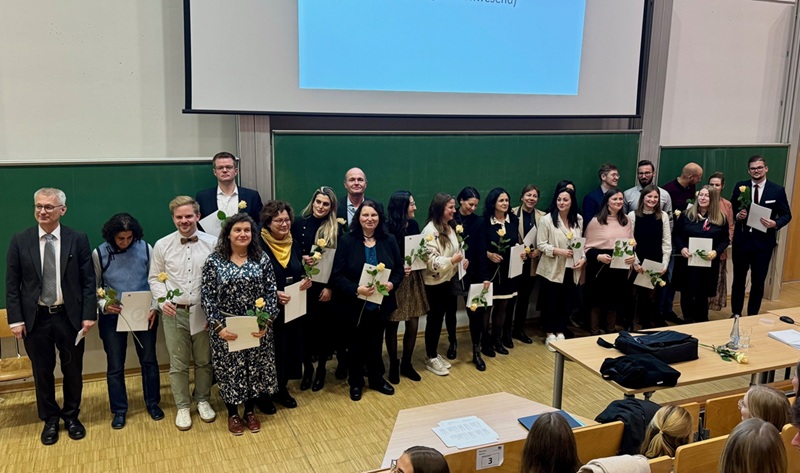Mitgliedschaft
Studiengang
DGRA e.V.
- Start
Deutsche Gesellschaft für Regulatory Affairs (DGRA)
Aktuelles
hr großes Engagement, ihre Leidenschaft als Pharmazeutin und ihre Liebe zum Beruf zeichnen Prof. Dr. Barbara Sickmüller aus. Am 22. Februar feiert sie ihren 80. Geburtstag. Dies ist ein schöner Anlass, auf ihre beeindruckende Laufbahn und Verdienste im Bereich der Arzneimittelzulassung und regulatorischen Wissenschaften zurückzublicken und ihr zu danken.
Am 6. Dezember 2024 fand im Rahmen der AbsolventInnenfeier der Pharmazie an der Universität Bonn die feierliche Verleihung der Masterurkunden des weiterbildenden Masterstudiengangs „Drug Regulatory Affairs“ (MDRA) statt.
Um den MDRA-Studiengang zeitgemäßer und damit attraktiver zu gestalten, planen wir dessen Erneuerung und Weiterentwicklung.
22.02.2025
hr großes Engagement, ihre Leidenschaft als Pharmazeutin und ihre Liebe zum Beruf zeichnen Prof. Dr. Barbara Sickmüller aus. Am 22. Februar feiert sie ihren 80. Geburtstag. Dies ist ein schöner Anlass, auf ihre beeindruckende Laufbahn und Verdienste im Bereich der Arzneimittelzulassung und regulatorischen Wissenschaften zurückzublicken und ihr zu danken.
06.12.2024
Am 6. Dezember 2024 fand im Rahmen der AbsolventInnenfeier der Pharmazie an der Universität Bonn die feierliche Verleihung der Masterurkunden des weiterbildenden Masterstudiengangs „Drug Regulatory Affairs“ (MDRA) statt.
22.10.2024
Um den MDRA-Studiengang zeitgemäßer und damit attraktiver zu gestalten, planen wir dessen Erneuerung und Weiterentwicklung.
Termine Studiengang
21./22.02.2025 Modul 5, Teil 2 (2-tägig)
07./08.03.2025 Modul 6, Teil 1 (2-tägig)
14./15.03.2025 Modul 6, Teil 2 (2-tägig)
28./29.03.2025 Modul 7, Teil 1 (2-tägig)




